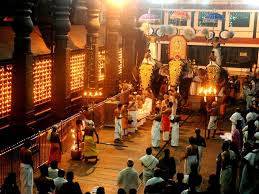Mundakopanishad : Chapter-2, Section-1, Mantram-3. { "Brahmam - the Supreme cause of all" }.

Mundakopanishad : Chapter-2. Section-1. Mantram- 3. { "Brahmam - the Supreme cause of all" }. Discussion-3. Eternal wisdom is that Knowledge, "Knowing which every other knowledge becomes known" ... Removing all the cotton, neither the cloth nor the pattern can remain. In cotton it exists, out of cotton it has come and into cotton alone can it merge back. Similarly the Pure Consciousness, the external Pure Wisdom is : ' That Knowledge,' - - " Knowing which every other knowledge becomes Known"; out of this 'Absolute Knowledge' has all the world of na...





















